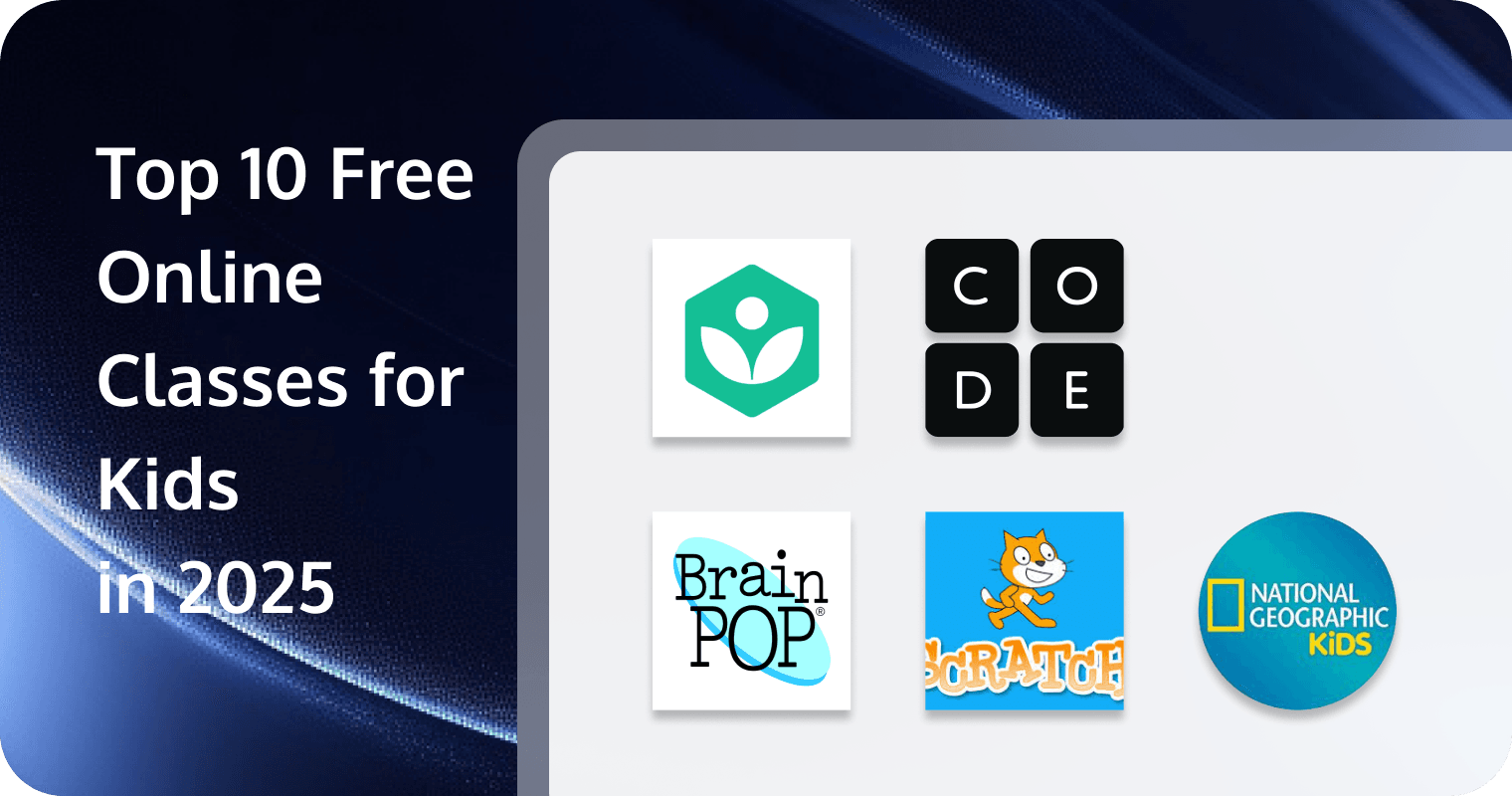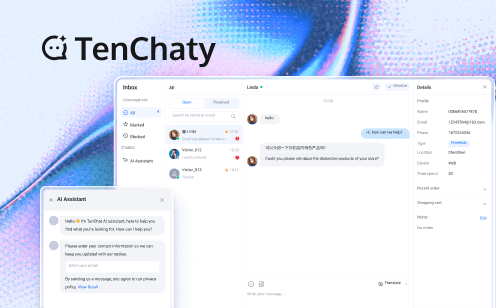
If you’re looking for fun and educational ways to keep your child engaged out of school, online classes for kids are a fantastic option! Whether your little one loves science experiments, dreams of becoming a coding whiz, or enjoys getting creative with art, there are plenty of free online classes that make learning exciting and accessible from anywhere!
To save you time, we’ve rounded up the 10 best online classes for kids that offer quality learning experiences without costing a dime. Plus, we’ll share some simple tips to help you choose the best class for your child’s interests and needs.

10 Best Free Online Classes for Kids in 2025
With 2025 bringing even more innovative and interactive learning opportunities, we’ve compiled a list of the 10 best free online classes for kids, catering to various interests and age groups. Let’s take a closer look:
Khan Academy
Khan Academy is a widely respected, nonprofit educational platform that provides a vast collection of free courses across multiple subjects. Designed to help kids learn at their own pace, it offers interactive exercises, instructional videos, and personalized learning dashboards.
Whether your child needs extra help with math, wants to explore science concepts, or is curious about history, Khan Academy provides high-quality resources created by experts. The platform is structured to align with school curriculums and supports self-directed learning, making it a valuable tool for students, parents, and teachers alike.
There’s also an engaging app, Khan Academy Kids, available on both Apple App Store and Google Play!
Code.org
A leader in democratizing coding education, Code.org offers self-paced courses from pre-reader basics to advanced Python. Kids solve puzzles, design apps, and explore AI ethics through themed activities.
The platform’s “Hour of Code” initiative provides quick, engaging tutorials featuring popular characters from Minecraft, Star Wars, and Frozen. With a strong emphasis on inclusivity, Code.org encourages students of all backgrounds to explore coding, helping them build problem-solving skills and computational thinking.
BrainPOP
BrainPOP makes learning enjoyable through animated videos, quizzes, and interactive games. Designed to simplify complex topics, BrainPOP covers subjects like science, social studies, English, and math in a way that’s easy for kids to understand.
The platform features a beloved animated character, Tim, and his robot friend, Moby, who guide children through engaging lessons. BrainPOP is widely used in classrooms and homes to supplement traditional learning and reinforce key concepts through playful, yet informative content.
Scratch (MIT Media Lab)
Developed by MIT, Scratch is a free programming platform that teaches kids how to code using a visual, drag-and-drop interface. Instead of typing out complex code, children can use colorful blocks to create animations, interactive stories, and games.
Scratch is designed to foster creativity, logical thinking, and problem-solving skills while making coding accessible for young learners. It’s a great starting point for kids interested in programming, as it builds foundational coding concepts that can later be applied to more advanced languages like Python and JavaScript.
National Geographic Kids
This dynamic hub developed by National Geographic blends science exploration with conservation awareness. Kids watch wildlife documentaries, play geography trivia, or join virtual “Explorer Classroom” sessions with scientists. It also includes DIY experiment videos and printable activity sheets, all aligned with NG’s mission to inspire environmental stewardship.
Prodigy Math
Prodigy Math is a role-playing game (RPG) where math proficiency unlocks quests and battles. Questions adapt to each child’s grade level (1–8), covering arithmetic, fractions, and algebra. Besides, teachers and parents receive progress reports, and the platform aligns with Common Core and state standards, blending curriculum rigor with playful engagement.
Duolingo ABC
Designed by language-learning experts, Duolingo ABC teaches phonics, sight words, and handwriting through bite-sized games and stories. Its adaptive algorithm focuses on literacy gaps, while offline access and no ads ensure a distraction-free experience. Different from Duolingo, this ABC-version program includes over 300 lessons, emphasizing letter recognition and sentence-building for emerging readers.
NASA STEM Engagement
NASA’s portal offers virtual tours of spacecraft, coding challenges, and design contests (e.g., building a moon rover). Activities like “Astronaut Training” simulations and live Q&As with engineers bridge classroom learning to real-world aerospace careers. What’s more, its resources are vetted by scientists, ensuring accuracy in topics like orbital mechanics and climate science.
PBS Kids
PBS Kids features a mix of interactive games, videos, and activities based on popular PBS shows like Sesame Street, Arthur, and Wild Kratts. Each piece of content is designed to teach foundational skills in literacy, math, and science while fostering creativity and social-emotional learning.
With its safe, ad-free environment, PBS Kids is an excellent option for parents looking to provide young children with high-quality, educational screen time.
Google CS First
Google’s coding curriculum uses Scratch-based projects to teach themes like “Game Design” or “Digital Citizenship.” Each module includes video tutorials, lesson plans, and rubrics for educators. Also, this platform emphasizes collaborative problem-solving, with clubs often hosted by schools or libraries to foster peer learning.
How to Choose the Best Online Classes for Your Child?
When selecting the right online classes for your child, several factors should be considered to ensure that the program that fits their learning style, interests, and goals:
Identify Your Child’s Interests and Learning Goals
Before exploring options, think about what excites your child. Are they curious about science experiments? Do they enjoy storytelling and creative writing? Maybe they want to learn coding or a new language? Understanding their interests will help you pick a class that keeps them engaged and motivated.
Check the Curriculum Quality
Look for programs with structured, up-to-date curricula that align with educational standards (like Common Core or STEM guidelines). Read course descriptions carefully—do they emphasize critical thinking, hands-on projects, or real-world applications? A strong curriculum balances challenge and fun, keeping your child curious and progressing.
Check the Teaching Style and Format
Not all online classes are created equal. Some use live, interactive sessions, while others offer pre-recorded videos. If your child thrives on real-time interaction, look for small class sizes or one-on-one tutoring. For self-paced learners, platforms like Khan Academy offer independent courses they can complete at their own speed.
Look for Interactive and Engaging Elements
The best online classes for kids include interactive elements like quizzes, games, and hands-on projects. Classes that encourage participation and creativity help children stay engaged and absorb information better. Platforms like Scratch, Code.org, and PBS Kids use gamification to make learning fun and effective.
Evaluate Support and Feedback
Great online classes provide regular feedback. Check if instructors offer graded assignments, progress reports, or live Q&A sessions. For younger kids, parental dashboards let you track their achievements.
Prioritize Safety and Age Appropriateness
Online safety is essential, especially for younger children. Before enrolling in a class, check for:
How TRTC Can Help You Build an Engaging Online Learning Platform for Kids
Are you a developer looking to create your own interactive and engaging learning platform? Whether you’re building a virtual classroom or an online tutoring service, having low-latency, high-quality communication tools is essential. That’s where Tencent Real-Time Communication (TRTC) comes in.
TRTC, provided by Tencent Cloud, offers a wide range of low-latency and cost-effective real-time communication solutions, including multimedia messaging, video conferencing, live streaming, and more.
With multi-platform APIs, server-side integrations, and UIkit components, you can quickly integrate TRTC into your platform with just a few lines of code.
Here’s how TRTC can enhance your online learning platform for kids:
Try TRTC’s online demo today and explore how its real-time communication solutions can transform online education!
Conclusion
With so many amazing online classes for kids available, finding the perfect one for your child can be both exciting and overwhelming. The good news? You don’t have to spend a fortune to give them access to top-notch learning experiences. Whether they want to dive into STEM, learn a new language, or explore the arts, there’s something out there for every young learner. Just remember to consider their interests, learning style, and engagement level when picking a course. Start exploring today, and watch your child discover new passions and skills from the comfort of home!
FAQs
What are the best online classes for kids?
The best online classes for kids include Khan Academy (free educational resources), BrainPop (animated lessons for grades K–8), Scratch (coding through a visual programming language), and Duolingo (fun language learning). These platforms offer engaging, age-appropriate lessons across subjects like math, science, reading, coding, and more.
Which is the best online learning platform for kids?
The best online learning platform for kids depends on their age and interests. Khan Academy offers free, comprehensive lessons in various subjects, while BrainPop uses engaging animations for K-12 learning. Duolingo makes language learning fun with gamified lessons, and Code.org teaches coding fundamentals through interactive lessons and games.
Are online classes good for kids?
Yes, online classes can be highly beneficial for kids. They offer flexibility, access to a wide range of subjects, and personalized learning experiences. However, the effectiveness depends on the child’s learning style and the quality of the program.
Is online school better for kids with ADHD?
Online schooling can offer benefits for children with ADHD, such as flexible schedules and personalized learning environments that may reduce distractions. However, it may also present challenges, including reduced social interaction and the need for strong self-discipline.

